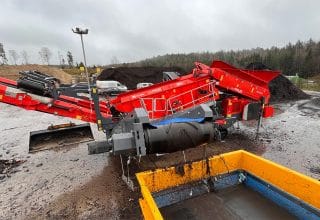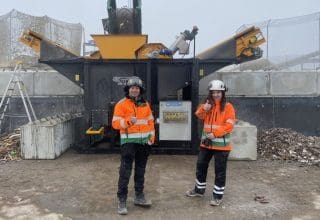Why is soil recycling important?
Recycling soil has a direct impact on the Our environment and economy. By reusing and treating soil, we reduce the need for landfill, while also reducing the extraction of new raw materials. This leads to lower carbon emissions and supports sustainable development by preserving biodiversity and promoting a more resilient environment.
Methods for recycling soils
There are several effective methods for recycling soil, depending on the contaminants the soil contains. We are working to increase the recycling rate of soils in everything from excavated soil to rejects from biogas plants. From dry methods to wet ones, it all depends on the material and it is enough that we get a representative material sample to quickly analyze what is possible to do. Some examples of solutions are as follows:
- Mixed soils with high moisture content - Possible solution is to sort by size with star sieves, allowing topsoil to be reused on site or sold.
- Contaminated soils - Possible solution is to sort out the fine fraction that often contains contaminants and blow out organic matter that often absorbs contaminants.
- Stone too large to be used as soil - Possible solution is to divide the stone into several fractions such as macadam, bedding, sand, etc. These fractions can then be used to replace virgin material.
Each method has its specific applications based on the state of the soil and the type of pollution. You can read more about the recycling of excavated material here.
Techniques and equipment for efficient soil handling
To effectively recycle soil, advanced technology and equipment are required. Norditek is at the forefront with innovative solutions such as sorting techniques and crushing equipment, which optimize the recycling process and reduce environmental impact. By investing in the latest technology, we can ensure that soil is recycled in the most efficient and sustainable way.
Case Studies: Successful Soil Regeneration Projects
Over the years, several projects have succeeded with various forms of soil reclamation. One example is the project in Jönköping Municipality, where the reject from a biogas plant is used to recycle it into new and usable soil.
The Future of Soil Recycling, and Circular Economy
The future of soil recycling looks bright, with technological advances and increased awareness of environmental issues. Soil recycling plays a critical role in the Our quest for a more sustainable future. By investing in and applying effective recycling methods and technologies, we can reduce environmental impact and promote a circular economy. Contact Norditek for more information on different solutions.




